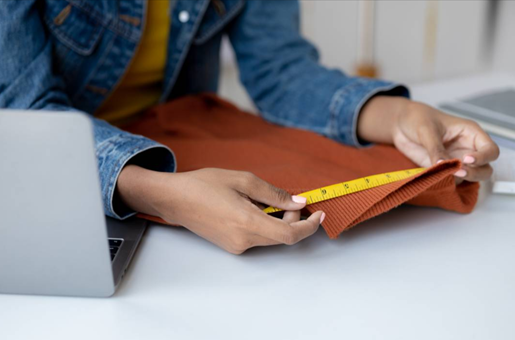💡 Introduction
Nahttypen Ever wondered why your store-bought clothes last longer or fit better? The secret often lies in the “Nahttypen”, the German term for seam types. These unsung heroes of the sewing world determine not just the strength and stretch of your garment but also its appearance and comfort. Understanding seam types is like learning grammar before writing — it’s fundamental.
🔍 Basic Classification of Nahttypen
Before diving into the rich variety of seams, it’s helpful to know they fall into two broad categories:
Open Seams (Offene Nähte)
These seams lie flat and open, typically ironed on both sides after stitching. They’re great for lightweight to medium fabrics.
Closed Seams (Geschlossene Nähte)
These are folded or enclosed seams that encase raw fabric edges — perfect for hiding frays and increasing durability.
🧵 Most Common Seam Types in Sewing
Let’s break down the popular ones that every sewist should know.
Plain Seam (Steppnaht)
The most basic and widely used seam. Simply two pieces sewn together with right sides facing. Easy and fast.
French Seam (Französische Naht)
A favorite for delicate fabrics like silk. It hides raw edges inside a neat double-stitched seam. Looks clean and elegant.
Flat-Felled Seam (Kappnaht)
Used in denim jeans. Extremely strong, with all raw edges enclosed. Requires precision but offers industrial-level durability.
Bound Seam (Einfassnaht)
Edges are wrapped with a bias binding. Offers a neat, tailored finish, often used in unlined jackets and bags.
Lapped Seam (Überdecknaht)
One piece overlaps another, then stitched down. Great for leather or fabrics that can’t be pressed open easily.
🧵 Specialty Seam Types
Mock French Seam
Similar look to a French seam but easier and faster to make. Good for lightweight fabrics where a full French seam isn’t needed.
Welt Seam
Gives a decorative finish and is used in tailored garments. The seam allowance is pressed to one side and topstitched.
Slot Seam
Two pieces are separated by a small gap covered by an underlay. Purely decorative and found in couture clothing.
Double-Stitched Seam
Just like it sounds — two rows of stitching for extra strength. Often used in sportswear or children’s clothes.
🧵 Seam Types for Specific Fabrics
For Stretch Fabrics
Use seams that allow for movement, like flatlock or serger seams. They won’t snap when stretched.
For Delicate Fabrics
French seams or mock French seams are perfect. They encase the raw edge and prevent fraying.
For Denim and Heavy Fabrics
Flat-felled and double-stitched seams give the strength needed to handle stress and wear.
🎨 Decorative vs Functional Seams
Some seams are all about style — think contrast stitching or slot seams. Others bear the weight of the garment, like a flat-felled seam in jeans. It’s a balance between beauty and brawn.
✂️ Seam Finishing Techniques
Overlocking
Uses a serger to encase the edge in thread. Fast, neat, and durable.
Pinked Edges
Cut with pinking shears to create a zigzag edge that resists fraying. Old-school but still effective.
Zigzag Stitching
A sewing machine method to keep raw edges tidy and somewhat stretchy.
🧠 Choosing the Right Seam Type
Choosing a seam isn’t random. It depends on:
-
The fabric type (is it sheer, thick, stretchy?)
-
The garment purpose (is it formal, everyday, sportswear?)
Asking yourself these questions before sewing will save you a ton of time and headache.
🏭 Industrial vs Home Sewing Seams
Factories often use high-speed machines and sergers. Some seams — like the coverstitch — are hard to replicate at home. But that doesn’t mean you can’t achieve professional results with a bit of skill and the right tools.
❌ Common Mistakes When Sewing Seams
-
Misaligned fabric edges — leads to puckering or uneven hems.
-
Ignoring seam allowances — ruins fit and balance.
-
Not finishing seams — results in fraying and poor durability.
✔️ Tips for Seam Accuracy and Durability
-
Always use sharp scissors or rotary cutters.
-
Press every seam before moving on — yes, even if it feels unnecessary.
-
Invest in a good quality measuring tape and seam guide.
Think of seams as the skeleton of your garment. Build it strong, and your outfit will last for years.
🎯 Conclusion
Seam types, or Nahttypen, are more than just stitches — they are the foundation of everything sewn. From delicate blouses to rugged jeans, choosing the right seam can elevate your garment from homemade to handcrafted masterpiece. Whether you’re a sewing novice or an experienced tailor, mastering these seam types is essential to creating garments that look as good on the inside as they do on the outside.
❓FAQs
1. What Is the Strongest Type of Seam?
Flat-felled seams are among the strongest, commonly used in jeans and workwear.
2. Can You Mix Seam Types in One Garment?
Absolutely! Use different seam types based on location and fabric behavior.
3. Are French Seams Only for Lightweight Fabrics?
Mostly, yes. They work best with light to medium fabrics that don’t bulk up when folded.
4. What Is the Best Seam for Beginners?
Plain seams — they’re simple, versatile, and a great starting point.
5. How Do I Fix a Seam That’s Coming Apart?
Unpick the old stitches and resew using the same seam type. Reinforce with a second row if needed.

